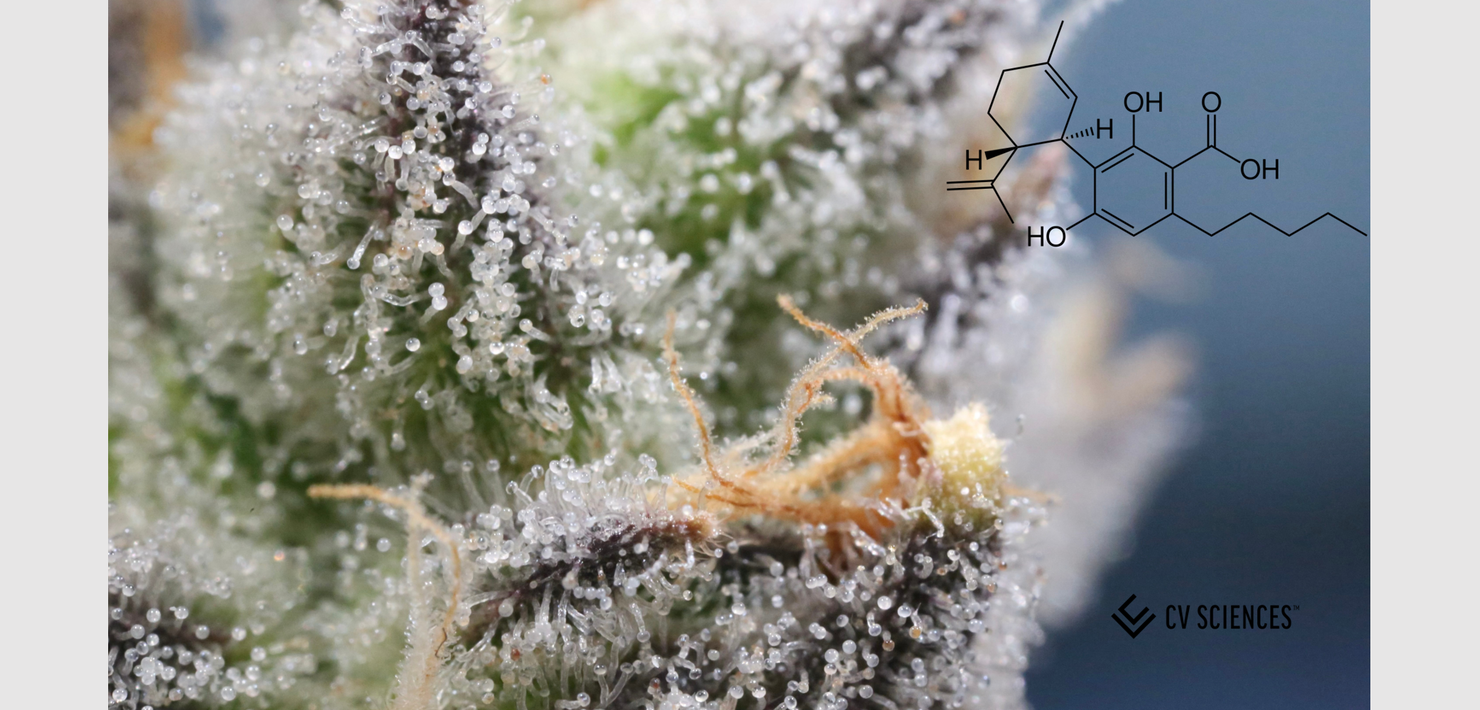Welcome!
ARE YOU OVER 21 YEARS OF AGE?
Nov 20, 2022

Although it's one of the most famous cannabinoids in the hemp plant, cannabidiolic acid (CBDA) hasn’t been as studied as much as some of its famous cousins like CBD or THC – but there’s a reason that CBD Acid is the second most popular ingredient in hemp extracts.
Cannabinoids are lipids, they’re fats. And there’s three major sources for them.
The most famous type of cannabinoids are the phytocannabinoids. These are the ones that comes from the cannabis plant, such as CBD, THC, CBG, and CBN. Over a hundred phytocannabinoids have been identified but only the top half dozen or so have been well studied.
The other major natural source of cannabinoids is from any creature with a spinal cord. These endocannabinoids – or endogenous cannabinoids - are produced in the brains and bodies of all mammals, including us humans. Discovered in the early ‘90s, the endocannabinoids are a crucial lipid signaling system used for functions as diverse as neuronal development, immune system modulation, sleep, reproduction, transmission of pain signals, regulation of metabolism, and brain signaling. The most famous endocannabinoids are anandamide (AEA), 2-AG, oleamide (OEA), and palmitoylethanolamide (PEA).
To probe the endocannabinoid system, scientists have modified the phytocannabinoids found in the plant and the endocannabinoids found in animals. These synthetic cannabinoids can have different properties and they teach us how the endocannabinoid system works. Some of them might become medicines someday - but for now, the main cannabinoids consumed by humans comes from the plant.
CBDA is the most abundant cannabinoid in nature. First isolated in 1955, it was the first cannabinoid acid discovered. CBDA is the raw form of the CBD molecule before heating.
To explain what that means, we must dive into how the plant produces its cannabinoids. It starts with two fatty acids and fuses them together to create CBGA (cannabigerolic acid), often referred to as the mother cannabinoid. CBGA is the first cannabinoid made by the plant, and the one from which all the rest are derived.
The plant does not contain much CBGA because it quickly converts it to either THCA, CBDA, or CBCA. These are the acid forms of your favorite molecules like THC and CBD. The acid forms of the cannabinoids have an extra carbon and two extra oxygens attached to one of their rings.
It’s something like a top hat for the molecule – and one of the main differences is that this acid group makes it less likely for the molecule to cross the blood brain barrier. That’s why eating a raw cannabis plant has no psychoactive effect.
To remove the acid group from a cannabinoid, it needs heat. Cooking it in an edible or lighting it on fire are two quick and easy ways to remove the acid group from THCA and transform it into the THC that will get you high.
But just because the THCA and CBDA don’t activate the brain, they still do all kinds of other things in the body. If you’ve heard about people across the country juicing the hemp plant and drinking the juice for gut health, they’re doing that for the CBDA content – and for good reason.
At the biochemical level, CBDA does many things. A short list includes:

Most importantly, CBDA means a healthy gut. But if you ask scientists, they're not exactly sure why. It probably involves one of the pathways above – maybe several of them working together – but maybe it works because of a CBDA function that we haven’t found yet. But something about CBDA is wonderful for the gut.
In studies in mice and rats, CBDA is potent at reducing nausea, as well as the anticipation of nausea. In mouse stress tests, it reduces anxiety. In rats, it helps with inflammation. But all of this research needs further confirmation in humans.
What we can say is that we hear a huge amount of positive feedback on our Raw products. For some people, regular CBD oil isn't strong enough. But when they try a Raw product with CBDA, it makes all the difference.
CBDA – which stands for CBD Acid – differs from CBD only by an extra carbon atom and a pair of oxygens. But that is enough to make a big difference
CBDA is the raw version of the CBD molecule. When the hemp plant produces its cannabinoids, they’re all in the acid form such as THCA, CBGA and CBDA. It takes a small amount of heat to convert them to their non-acidic forms. This means that CBDA is the most abundant cannabinoid found in Nature because it’s what the hemp plant produces the most. So when you hear of people across the country juicing the hemp plant and drinking the juice, it’s the CBDA in there that’s helping them with their gut health and other things.
For practical purposes, CBDA is just as potent for health as CBD – though it works in different ways. CBDA helps with anxiety, possibly because it interacts with the serotonin receptors. It also helps to raise the levels of anandamide – the first endocannabinoid discovered, often called our neurotransmitter of bliss. In relation to inflammation, CBDA inhibits the COX1 pathway. And there’s many patents related to the use of CBDA.
The long history of human use – and an impressive amount of peer-reviewed research – points to why the CBDA molecule is so important for health.
No. While CBDA does many things at the biochemical level, it does not bind to the CB1 receptor, the receptor whose activation causes the psychoactivity of cannabis. Consuming CBDA will cause no feelings of being high, though it might cause feelings of peace (serotonin receptor).
Yes, under the 2018 Farm Bill, any cannabinoid derived from a hemp plant which contains less than 0.3% THC by dry weight is a legal dietary supplement. We make everything we produce from legal CBD-rich hemp. This includes the CBDA that goes into our Raw products. It’s legal, so enjoy it.
The easiest way to take CBDA is our Softgel Capsules. They contain a full spectrum hemp extract in a vegetarian capsule. With 5 milligrams of CBDA and CBD, they’re the perfect way to find out what raw hemp can do for your health
We created our Raw CBD Softgel Capsules to be the best source for a mix of raw CBDA, CBD, and all the ingredients that go into a full-spectrum hemp extract such as the terpenes, minor cannabinoids, and fatty acids. These molecules all work together for good to help your guts to be happy and therefore, for you to be happy.